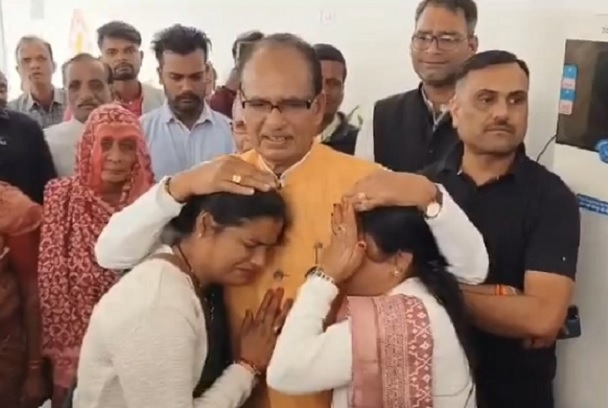Juvenile Justice: Law aims to protect minors but process becomes punishment on the ground

Sheeran Mohiuddin Alavi
NewsBits.in
The aim of the special law for juveniles, is to protect minors from the harsh process and treat a child, sensitively and differently, unlike an adult.
But what if despite the higher courts and legal luminaries' best efforts, on the ground the minor again gets caught into the same old system and the process becomes the punishment on the ground.
Actually, the Juvenile Justice (Care & Protection) Act came into existence in 2000 and, later it was amended in 2015. The act aims to ensure justice for minors--Justice along with care and protection.
The term 'minors in conflict with law' was used and special care was taken that the identity of child is not make public & that the minor should not be lodged in prison but sent to.observation homes.
It must be known that in the case of juveniles, a Social Investigation Report is prepared for every such minor in conflict with law. Also, the law provides that after this Social Investigation Report is out and if it suggests that juvenile is neither likely to come in contact with a known criminal, nor likely to be in conflict with law again, then he shall be released.
In fact, nowhere it mentions that gravity of the offence or his/her role [in the case for which minor was booked], would be considered, while granting bail. The juvenile's inquiry is conducted by JJB [Juvenile Justice Board] that has a magistrate and two members of social standing.
The objective behind the special act is that juvenile mustn't face rigorous process, rather, he is sensitively dealt with, unlike other cases in which adults are on trial. But the minor's ordeal begins when the Board rejects bail application on the basis of gravity of charge.
Rather than basing decision on the social investigation report, when the board decides it on the basis of gravity of the charge, it has a major impact and it makes the release the child [minor], more difficult and the spirit behind a law that aims at more sensitivity, is lost.
As a result, the affect is much severe. Once the bail is dismissed, the next step is an appeal before sessions judge. Though it is not much talked about, but the sad aspect is that it again puts him in the adversal system from which he was supposed to have been given relief.
Even in case of minor, procedure gets tough and the other party has to be summoned & heard before deciding the appeal. This entails the process of issuing notice to the complainant and (or) victim. Now, if this appeal gets dismissed, then Act provides for revision petition to be filed before the high court--again mandatorily requiring issuance of notice to complainant and/or victim.
While in other offences where the person on trial is an adult, after rejection of bail, a bail application is filed before sessions court under section 439 i.e. 483 BNSS. In case of sessions' rejecting it, the bail plea is filed in HC under 439 CrPC. But there is no mandatory requirement of notice to victim or complainant.
Hence, in general cases, the power of grant of bail is concurrent, but for juveniles, the decision of subordinate court has to be impugned. The process turns challenging and cumbersome.
If social investigation report mentions that juvenile is likely to come in contact with a known criminal, then, that is not enough, as the probation officer has to to also give specific information & pinpoint the particular criminal, whom the juvenile is limely to come in contact with.
PROCESS AND PROCEDURE
The saddest part is that juvenile, up to age of sixteen, can be awarded maximum punishment of three years of detention in the observation home. But following the procedure that makes it a long and a tough process [rejection of bail by Board is followed by filing of appeal in session court against the order of the board, which requires serving notice to victim and upon rejection, juvenile has to file a revision to HC, challenging order of the board and the order of the appellate court, which further requires issuance of notice by HC and an opportunity of hearing the complainant or victim].
As we know that CrPC has a provision that if a person has spent a particular period in jail without trial getting complete, then he should be released in five years, if the maximum punishment in that case, is ten years. This is because he has spent half of the jail term, already, without even the case getting decided.
In case of juvenile, it comes out to be 1-1/2 years but the minor gets trapped into a procedural maze. In one recent incident, two minors--an 11 year old and a 12 year old, are in observation centre since July 2023.
In another case, a boy has already spent over two years. Suppose, the minor gets acquitted later, he would have already spent maximum possible sentence for the juvenile before the completion of trial.
For a moment, imagine, if he is discharged or acquitted of charges, later, it is a travesty of justice that he spent such a long period in observation centre. This happened in his formative years and it can have serious, adverse affect on his mind, as well as life in future.
This is all due to the fact that the spirit behind Junvenile Justice Act that there is need for keeping minor away from the system in which adults face trial, and that the minor must get care and protection, the process on ground takes its toll on the child and it puts him/her in a difficult situation.
Despite clarity in law and the fact that it mentions that gravity of the offence aside, juvenile is entitled to be released and shall be given bail on the basis of social investigation report [psychological assessment report], but it doesn't seem to happen on the ground and the minor's years are spent in confinement in the centre.
[The writer is a lawyer who practices in the High Court. The views are his own]









